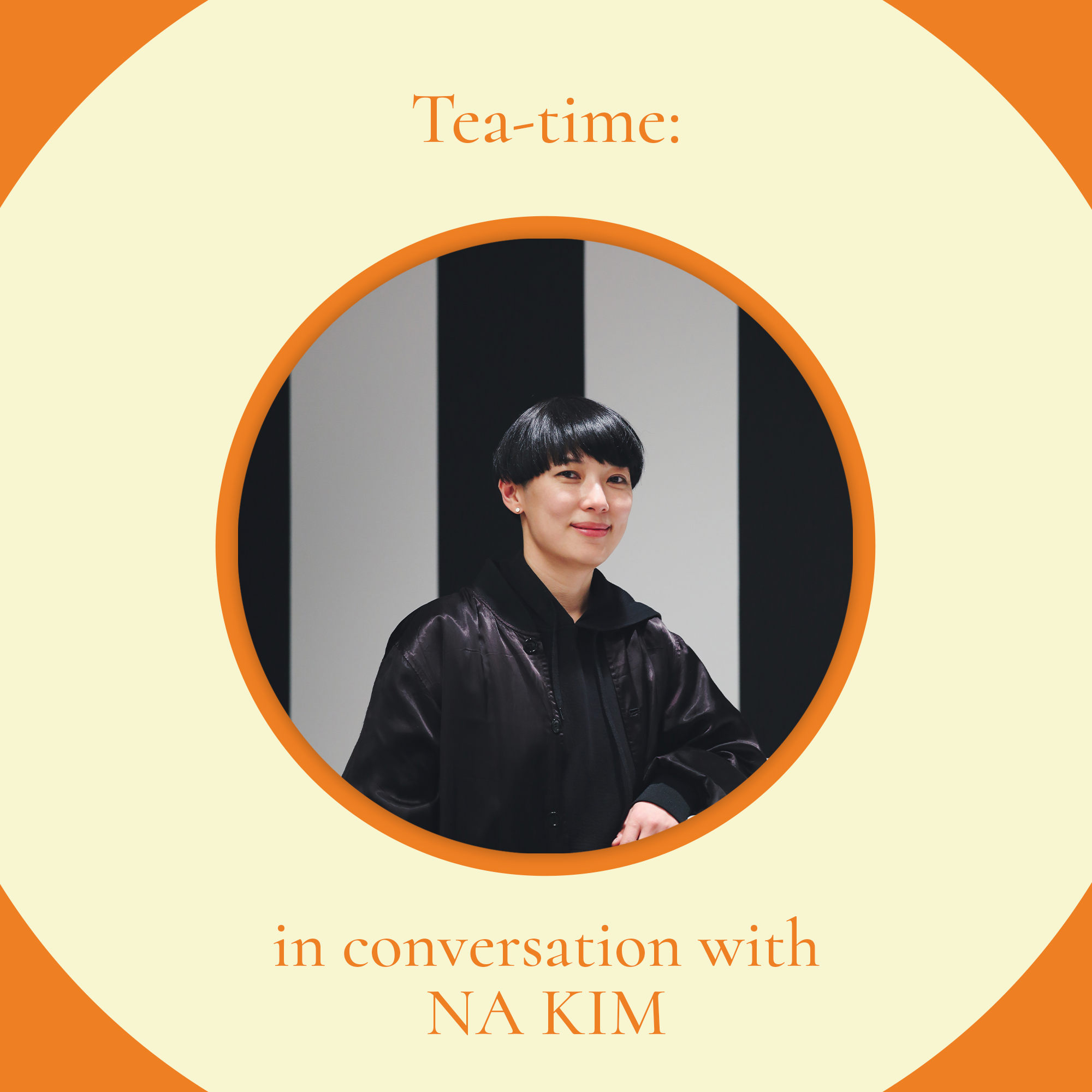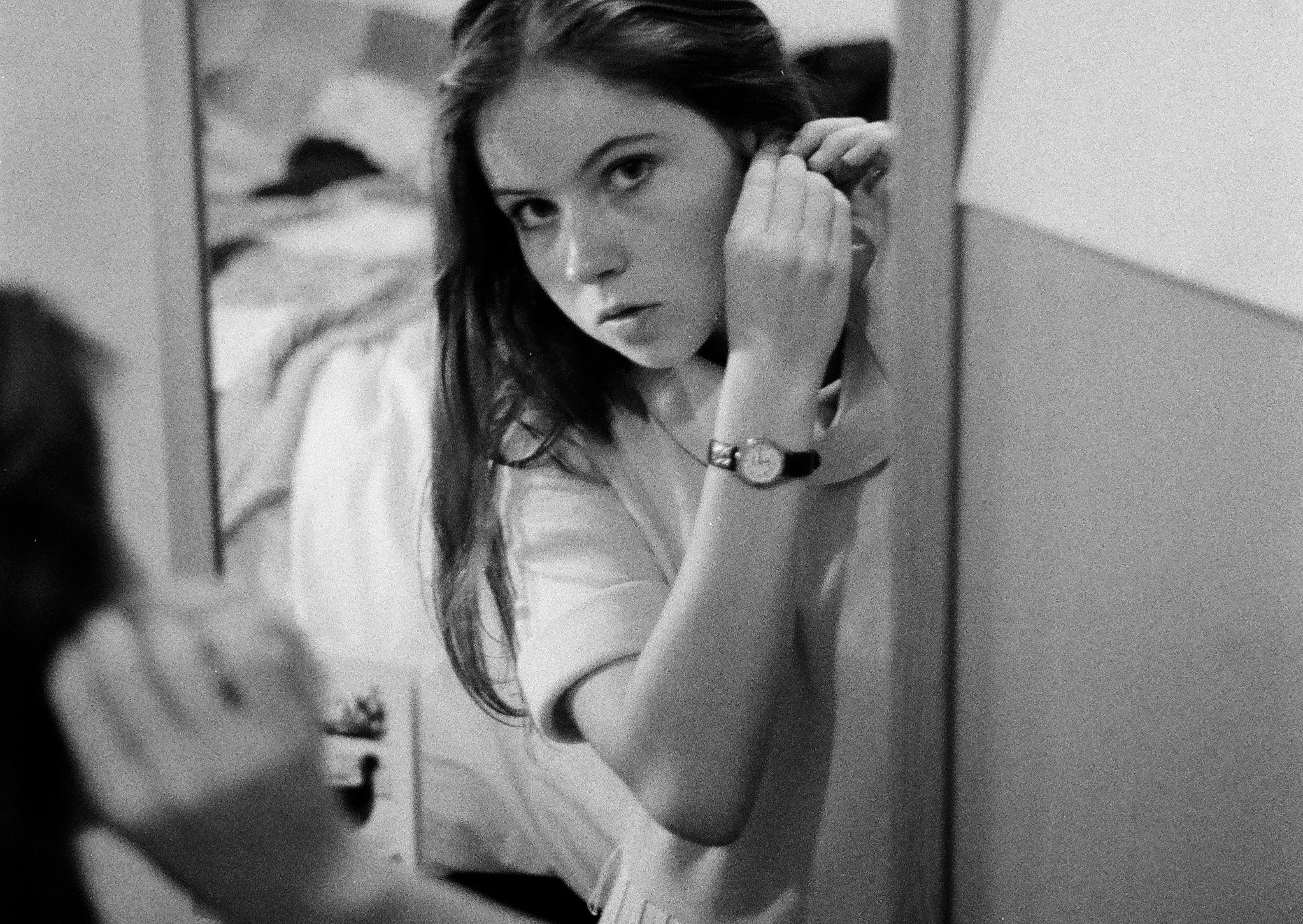
Photo Essay
This project started with a two-hour conversation about waistlines. I started thinking about how an accentuated waist makes me feel more feminine, but also makes me sharper in conversation. I know I’m much better at delivering a punchline in a pencil skirt than pyjamas. Each morning I plan my outfit around the posture that a certain jacket will give me, and when I take off my bandana in the evening it can feel like I’m removing a helmet. Getting dressed has always been about defining the boundary between myself and the outside world. It’s about wrapping that boundary in layers of fabric and colour when the world is confusing or painful. In these images I wanted to capture the private revolution of getting dressed.
– Laura Henderson Child

When I’m getting dressed in the morning I settle in front of the mirror. I sit or stand in different positions that I know I’ll be in during the day; I know how the clothes will look when I sit at a desk or when I walk down the library stairs.
I’m definitely less hung up on creating a “feminine” shape than I used to be. When I was coming to terms with my sexuality I bought this long skirt that my mum said made me look like a witch, especially when I layered it with baggy items on top. But since I’ve been ‘out’ I’ve worried less about creating a waistline. I think I try to assert myself as a queer woman through the way I dress.
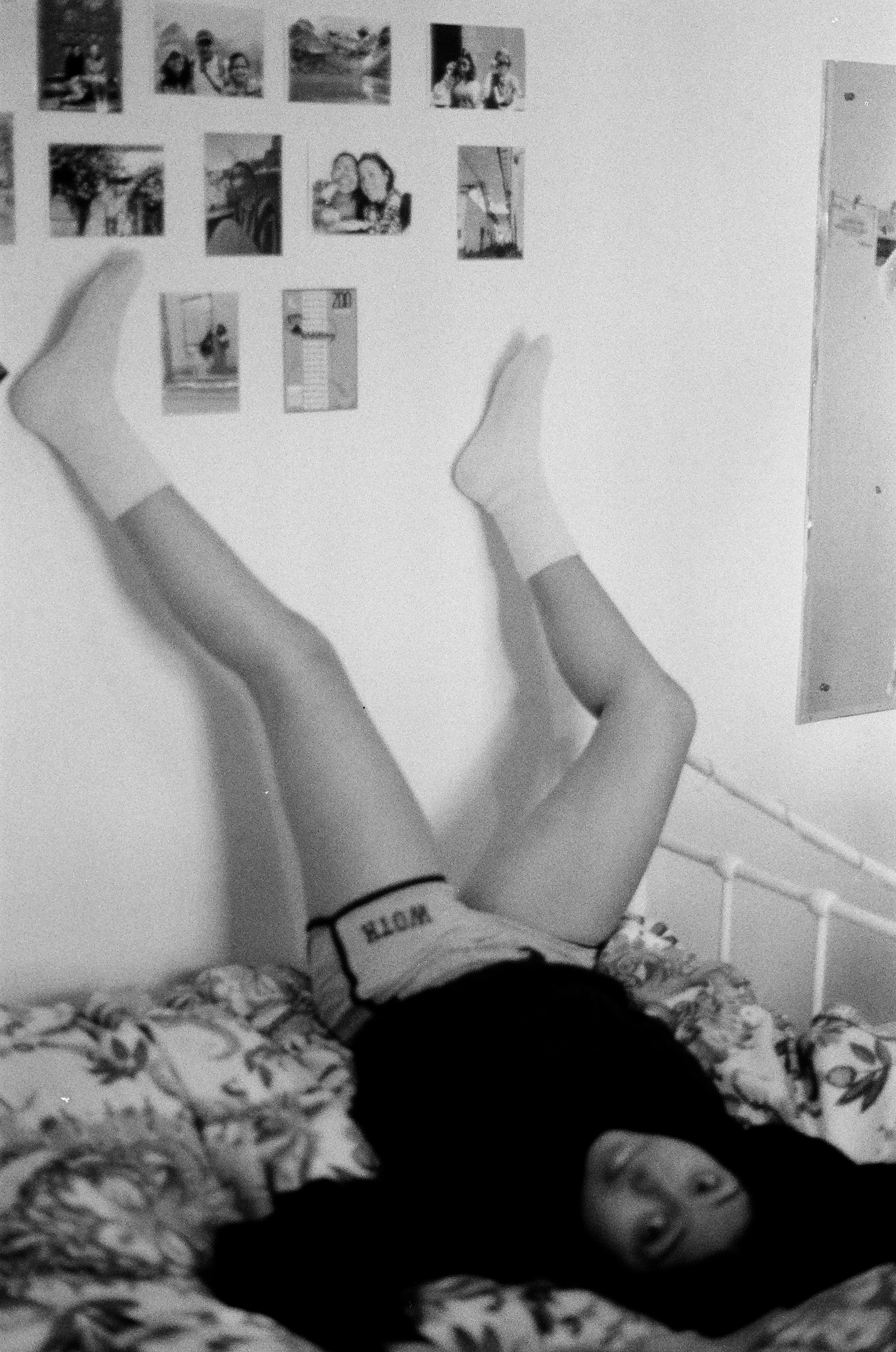
I think I found the style I have now when I came to university. At school, girls with bodies that were nothing like mine were constantly told that they were attractive. We didn’t suit the same cuts or styles, colour showed up differently on my skin, and things that may have been labelled “sheer” weren’t sheer on me.
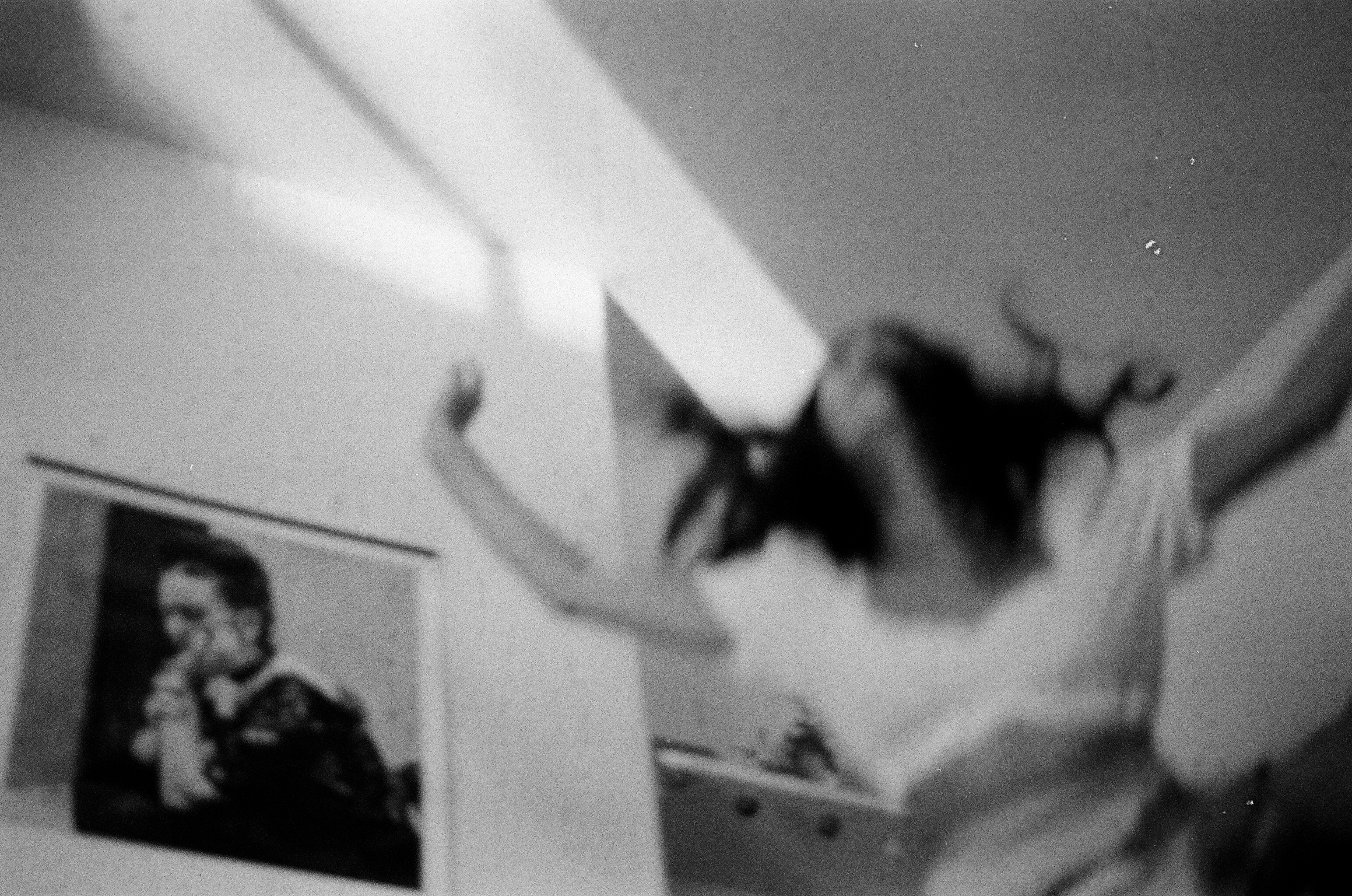
I think my style now reflects a body I’ve reclaimed after a long period of feeling unhappy with it. At one point, I used to wear men’s clothes to hide how my body fluctuated. Now I know that that’s just what being female is. I love seeing pictures of what I wore when I was a toddler. I try to let those clothes influence my choices as an adult – finding items that are just as bright and colourful.
What is getting dressed about now? Joy.

When I’m getting dressed for work to teach a classroom of 15 year olds, I want to make sure that I can’t be read as queer. I remember being 15 and feeling people always read me as queer, or gay, or whatever, and there was nothing I wanted less.
I’m not sure that I could do a job where I had to wear a suit. It would feel like I was shouting “I’m a man!”. I don’t think I want to say that.
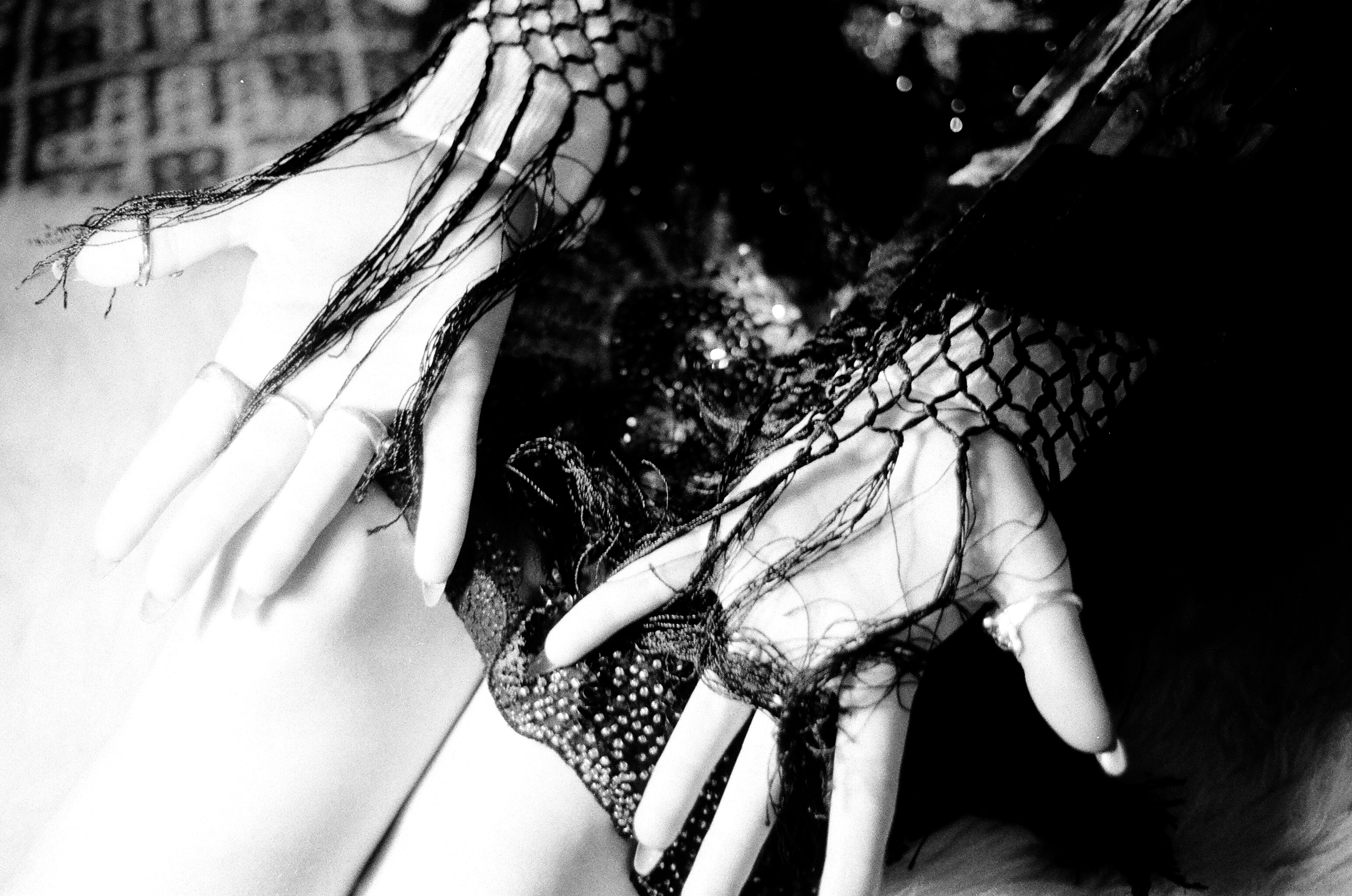
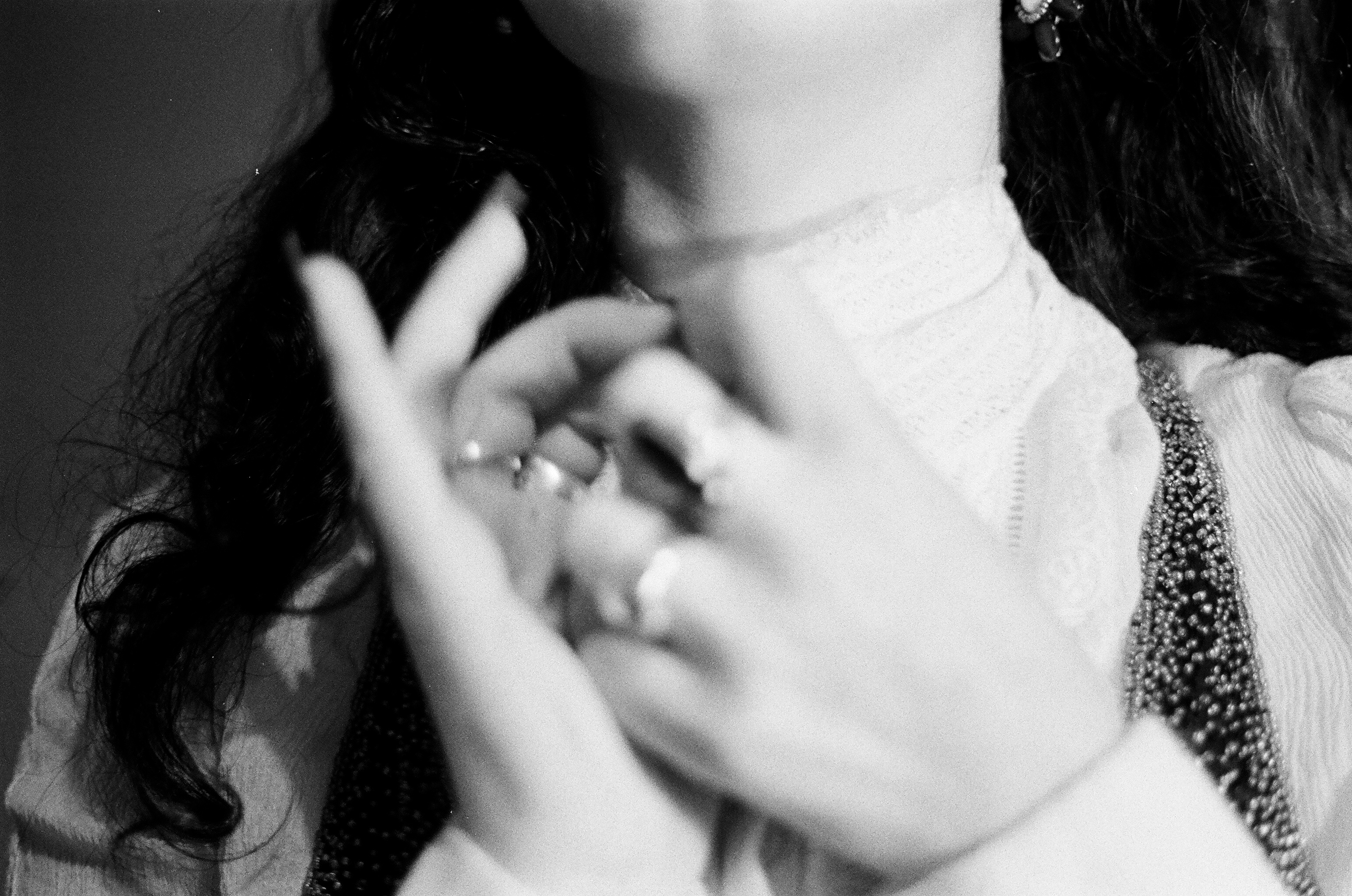
I like wearing clothes that make me feel beautiful or confident, so dressing for me is a form of self-care. I often plan my outfits around how the fabric feels on my skin. I like layering silks and velvets, fabrics that are luxurious.
I try to play a game with what I expose and what I don’t. I’ll wear a long skirt and a more revealing top, or a sheer dress that covers my entire body. I’m fashioning a kind of sexuality that’s about teasing and intrigue.
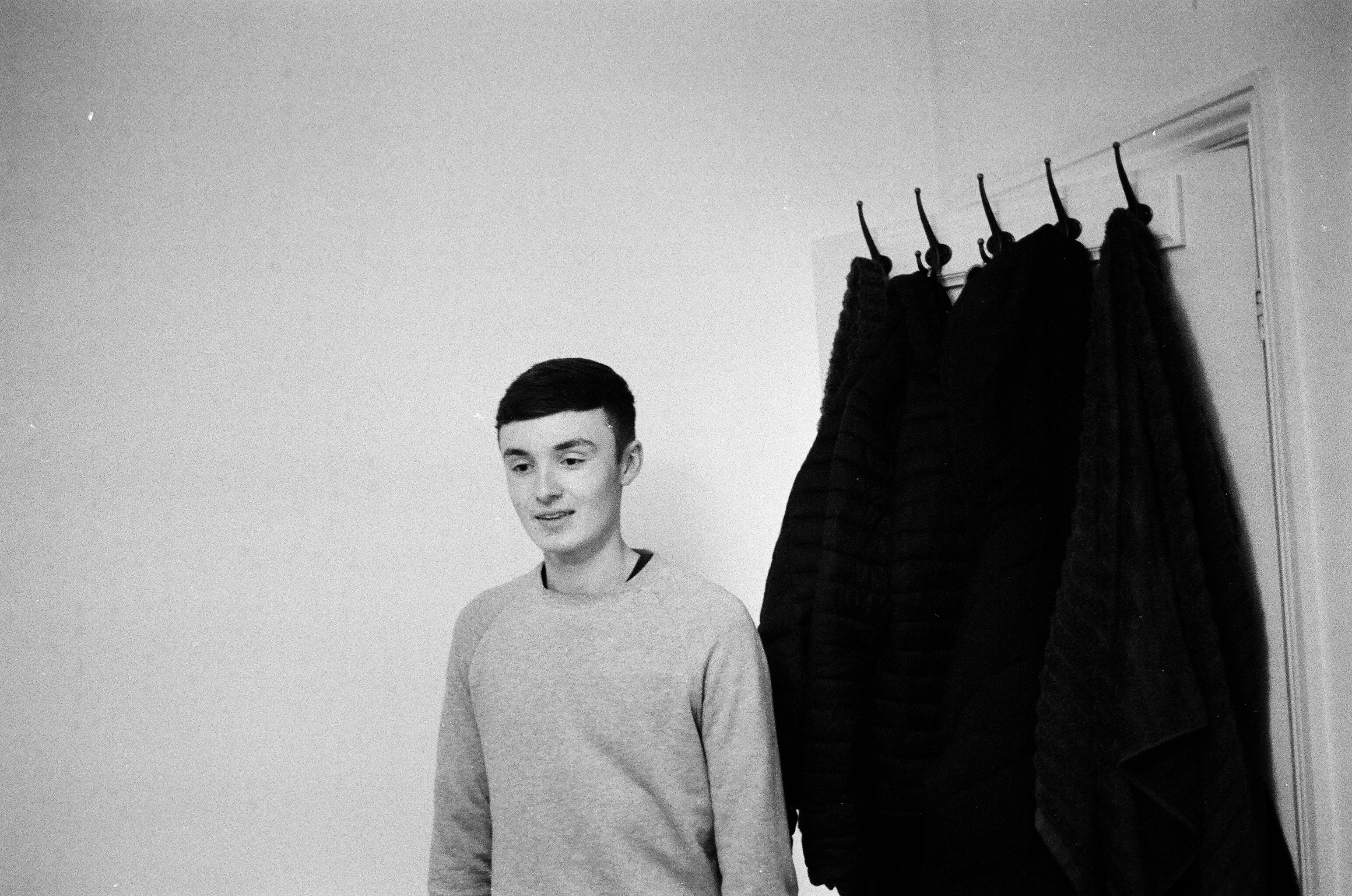
It’s got to be clean and tidy. I only ever really wear black, white, grey, maybe khaki. I never have to plan outfits in advance and I can just mix and match. I’d never lend clothes – I want to keep them for myself and to know where they are. It’s got to be clean and tidy.

I love getting dressed. It feels like an easy creative outlet – drawing something or painting takes such a long time. I spend most of my time at the moment coding so it’s nice to use a totally different part of my brain.
I had this pair of trousers that I wore for all the best moments of my second year at university. At the end of the year I gave them away. It felt like the right thing to do.
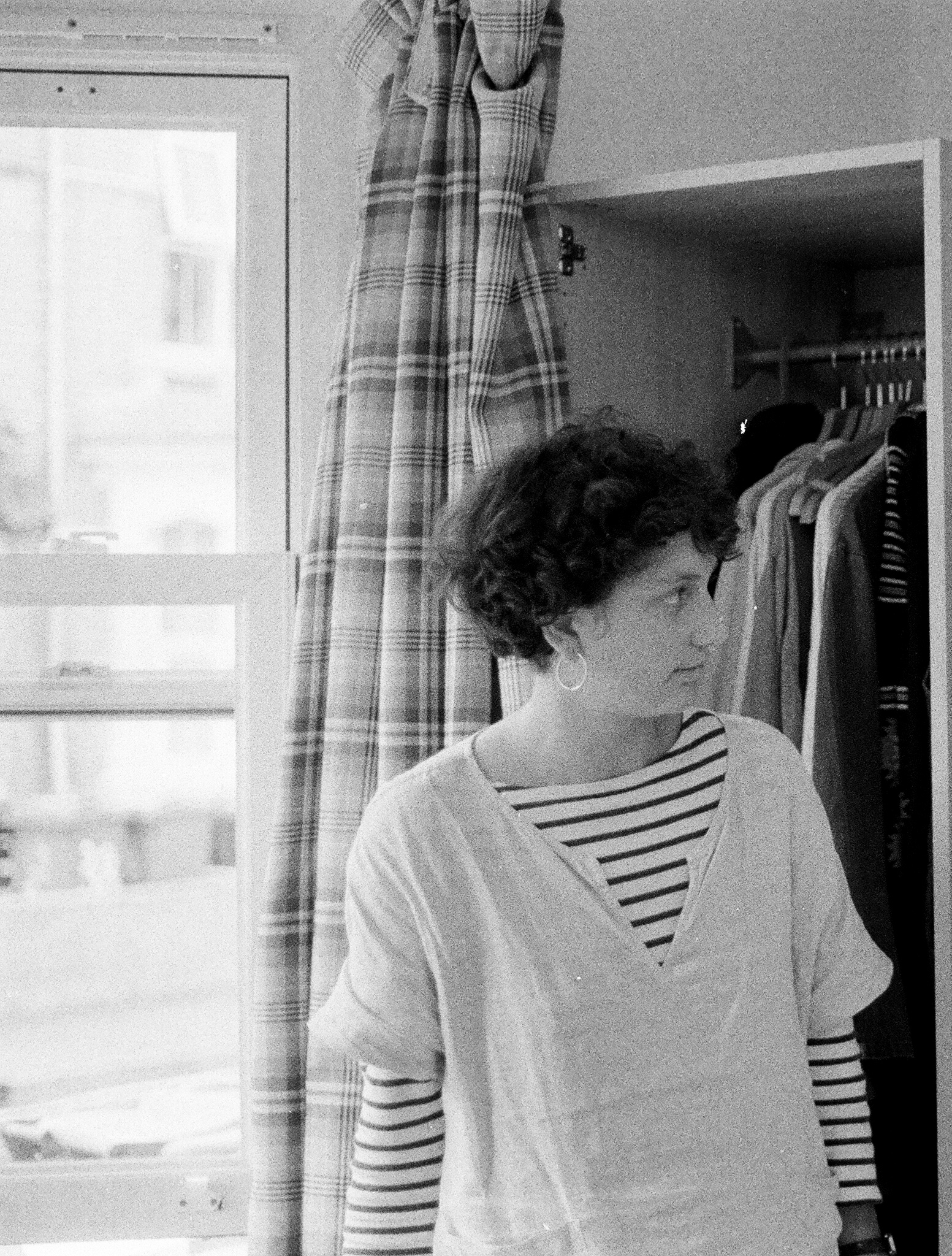
Every morning I get dressed in the dark with the doors shut. My window looks out onto the street and my door opens in to the hallway, so as soon as I open either of them my bedroom becomes public. I always wake up ten minutes too late but I’ve got set templates of which pieces and shapes work together in an outfit. I wear a lot of shapes that feel quite primary school – boxy t-shirts and trousers that swing out into a triangle, but the fabric will be pinstripe or velvet. It feels like an intersection between my mum and me as a child.
I’ve got to feel the air between me and my clothes. Otherwise I just feel uncomfortable.

When I was about fifteen my mum told me the rules of getting dressed.
For a day when I’m sitting down a lot, she told me to wear something off the shoulder. If I’m walking around a lot, then to show my legs or wear trousers with an interesting shape. It’s about what’s being exposed or drawn attention to, and what’s not.
I want my mum to like what I’m wearing.
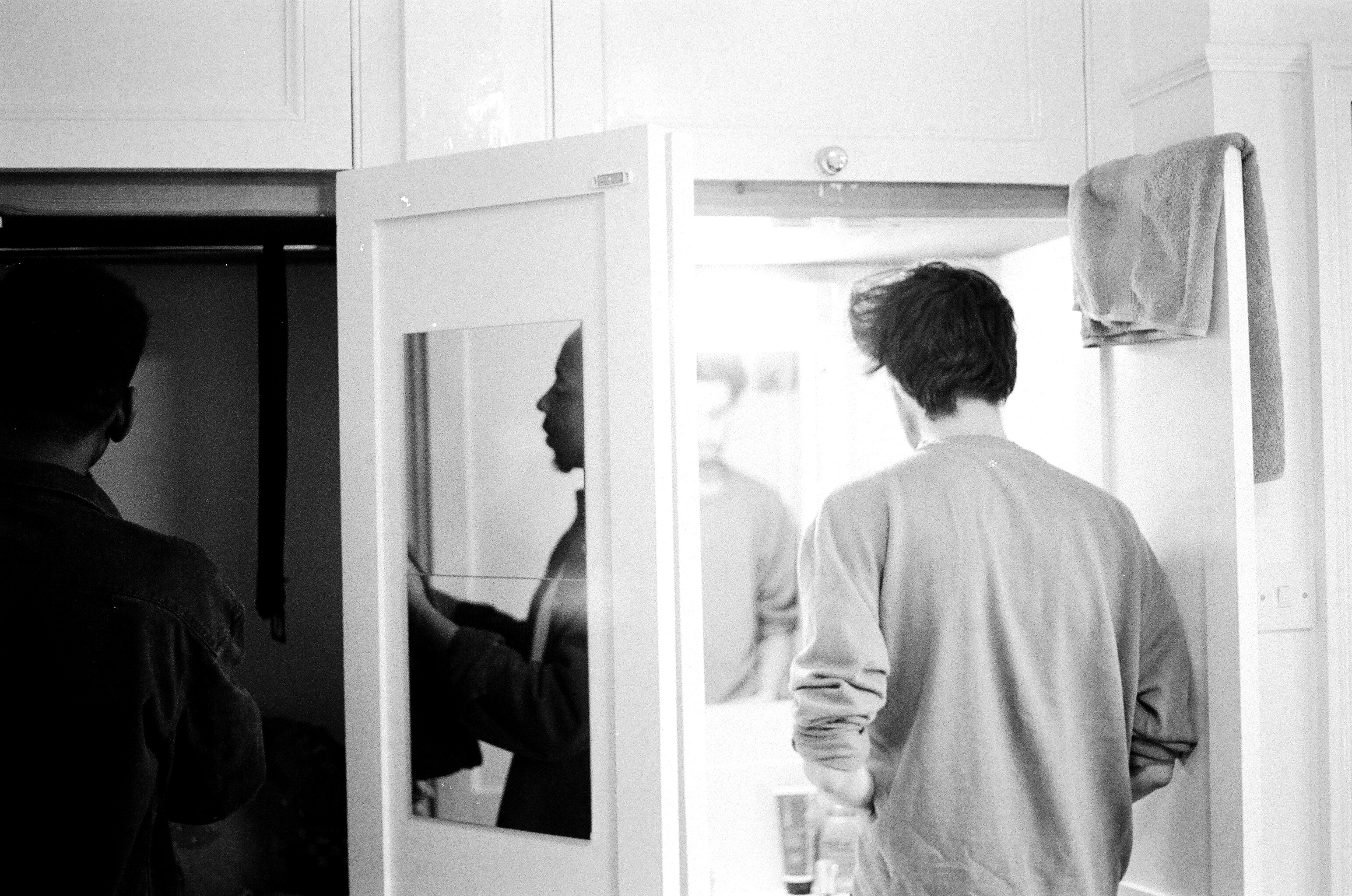
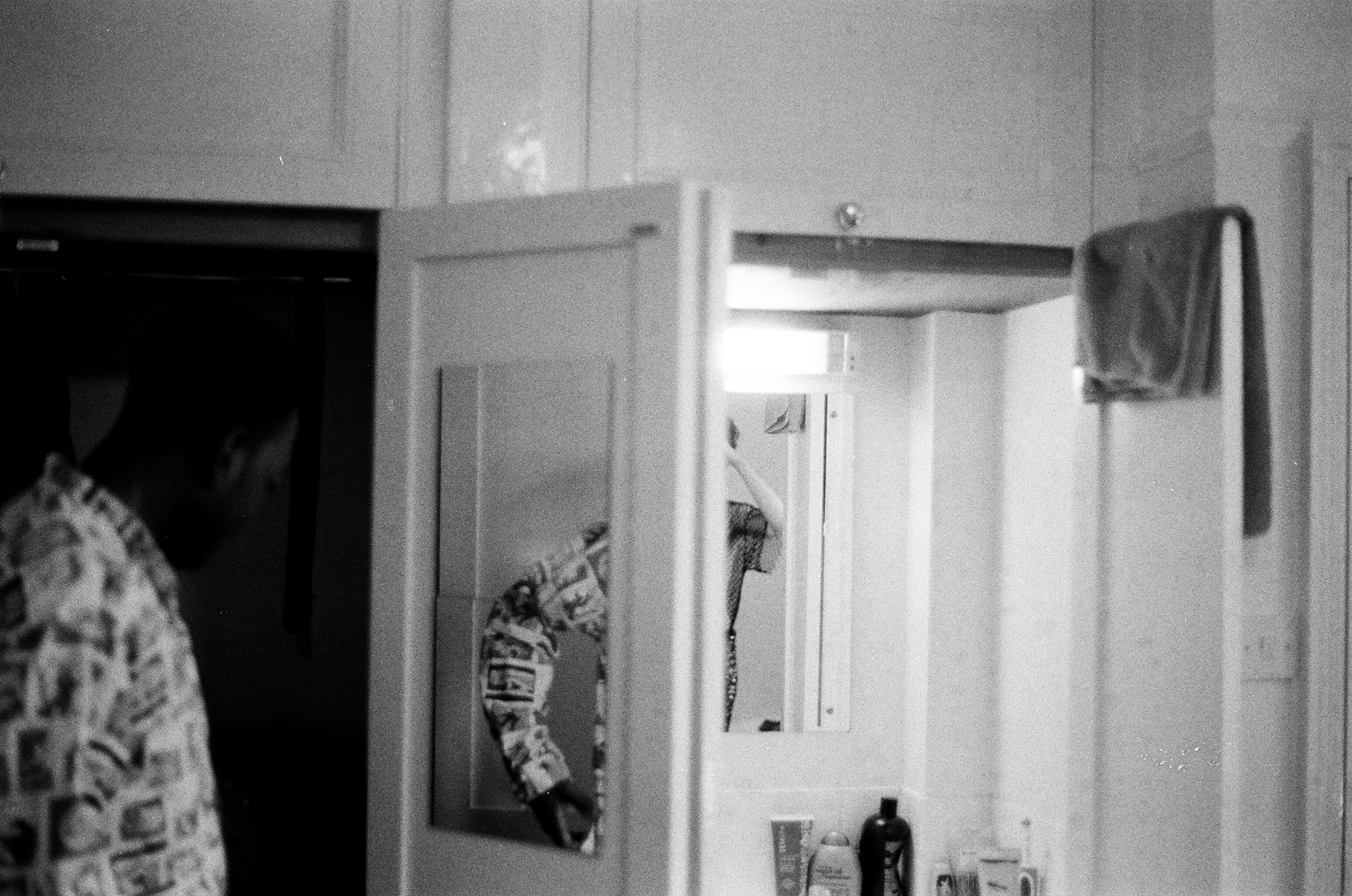
There’s a photo of us from one of our first dates where we’ve swapped jumpers. Whenever we’re getting ready together now we go straight to each other’s wardrobes. There’s something nice about people knowing that you’re not wearing your own clothes.
When we were packing to go to New York together, we had a suitcase stuffed with clothes, and we edited it down for about four hours. When we arrived, we acted like we lived there more than we behaved like tourists, and so the clothes we brought became part of creating a sort of lifestyle for ourselves.
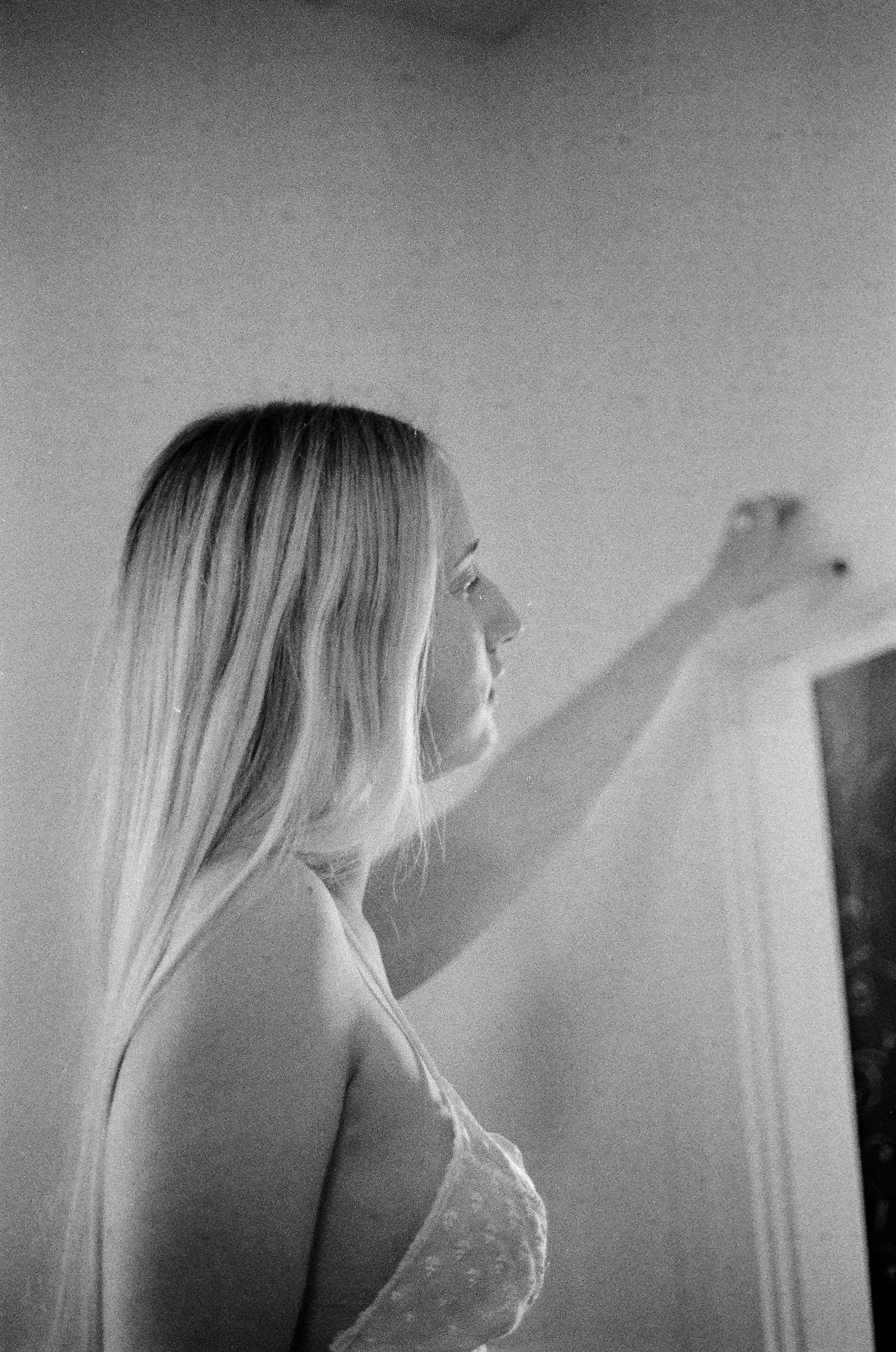
When I was little my mum dressed me in these old-fashioned frocks with sashes. I wore them every day until I was about nine or ten – I stuck out like a sore thumb at school. I still love wearing old fashioned clothes, a lot of male tailoring from the 40s and 50s. Wearing men’s clothes means that either men have to view me as an equal or their gaze just fails on me entirely.
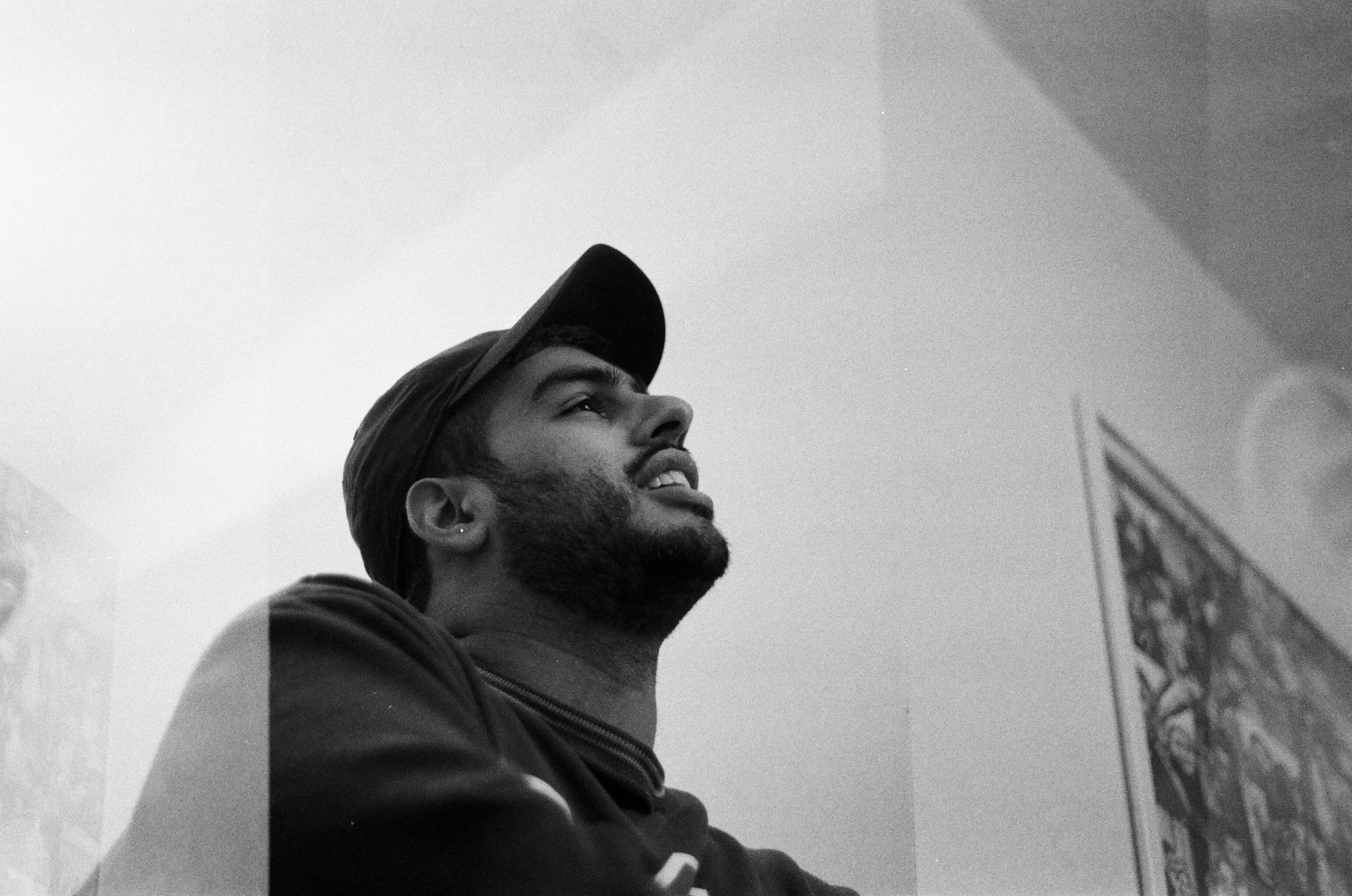
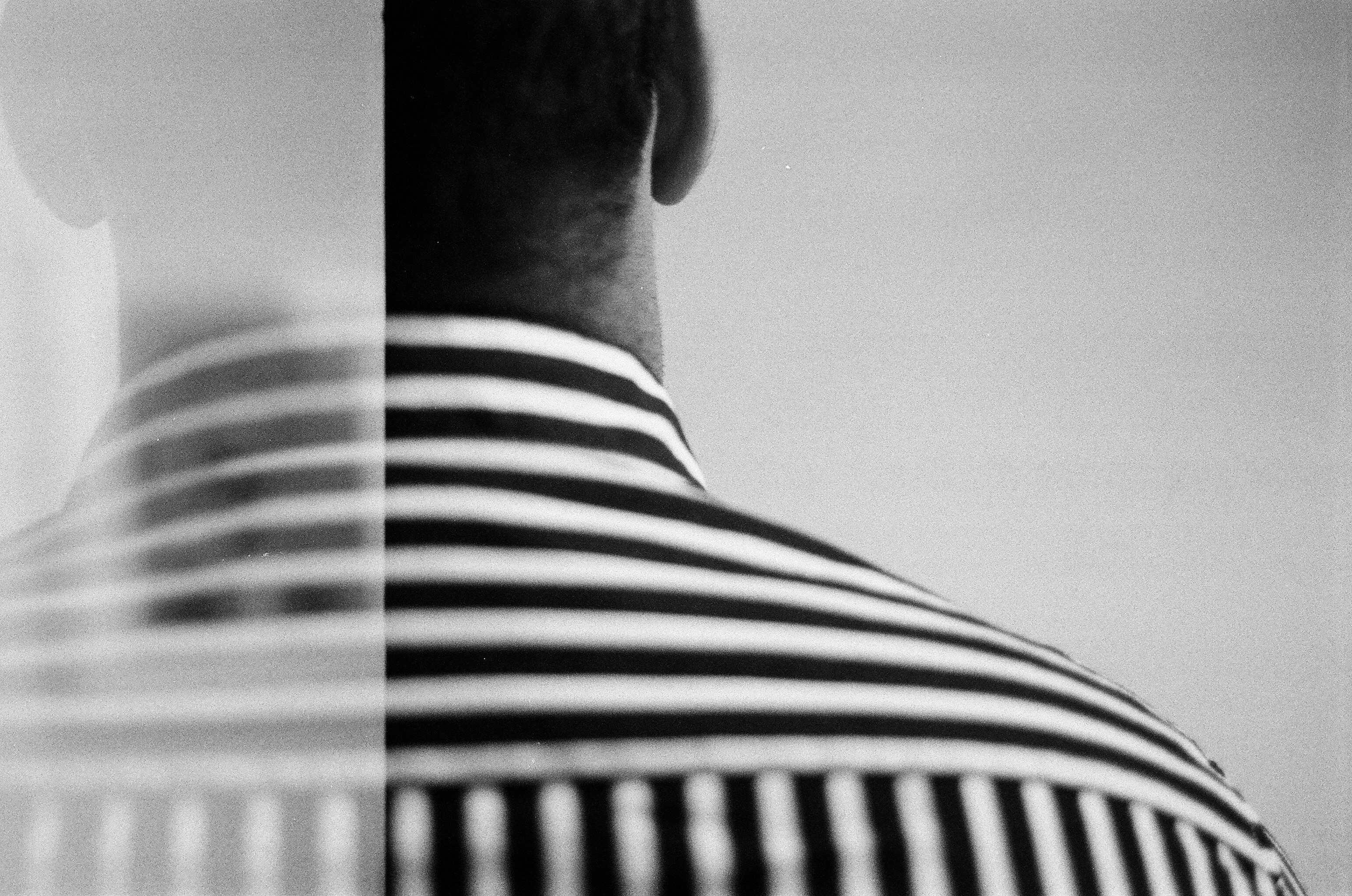
I think I’ve inherited my dad’s baseline physique which is kind of like an upside-down triangle. I’ve got quite broad shoulders and on dates or for anything formal I always wear shirts that are fitted to draw attention to them.
I’ve always had the style I have now, but I couldn’t express it until I lost about four stone. When I was bigger, clothes just felt like big pieces of coloured material. Losing weight didn’t coincide with me actually coming out but it definitely gave me more confidence when I started going on Tinder. The ideals I aspire to are probably classically masculine ones. When we get dressed we project an image of ourselves to be validated and then we internalise it. If I believe I can pull it off, other people will believe it too.

I want to be immediately visible as non-binary through the way I dress.
I still experience dysphoria with my chest. Not a lot of people know that. I often try to hide that part of my body but I’d never wear massive shirts or anything really oversized because I don’t want it to be obvious what I’m doing. Buying this turtleneck kind of felt like a huge deal because high necklines draw attention to your chest.
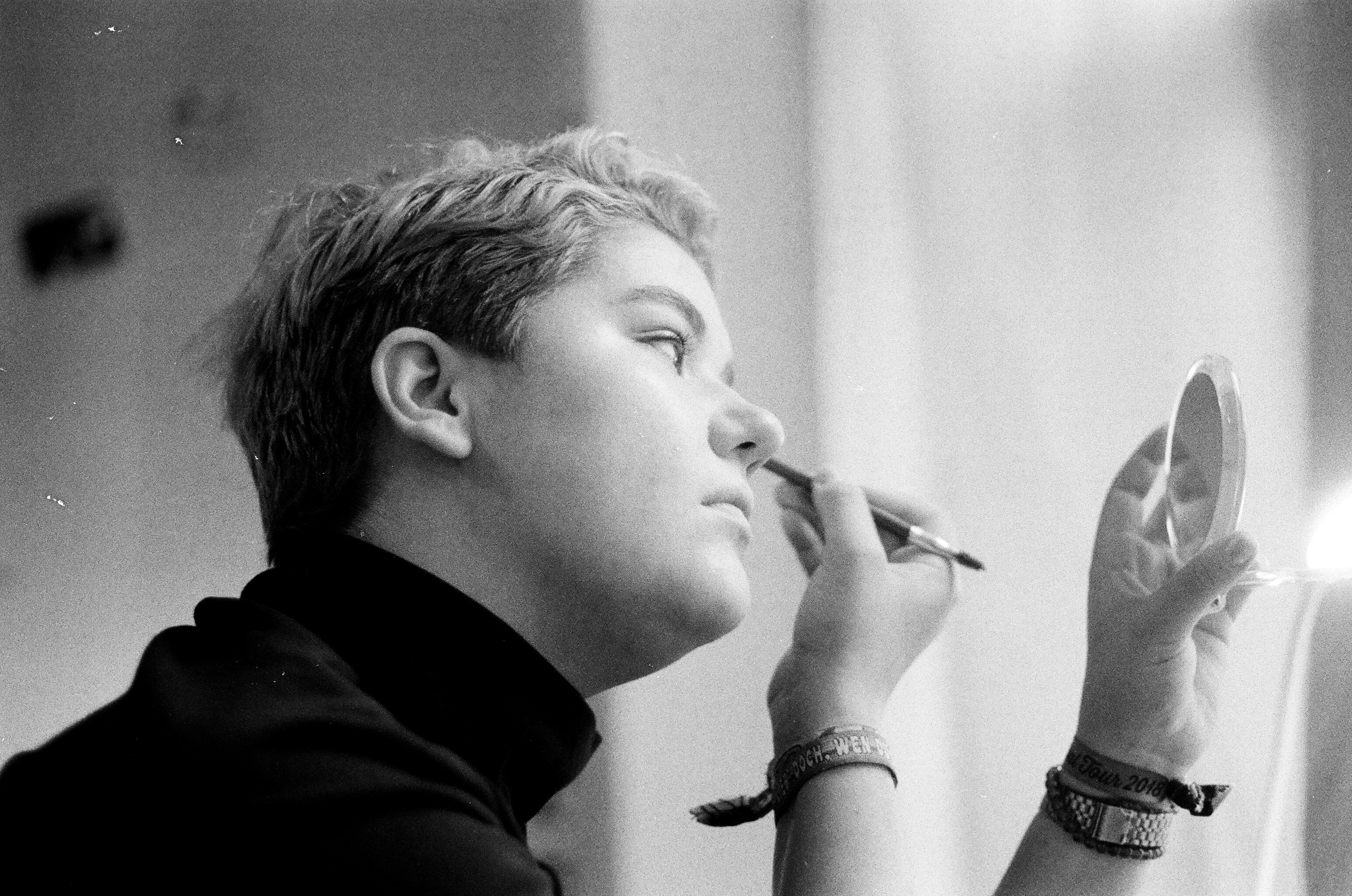
Makeup is really important. I’d say I use it to show elements of my gendered self – like bigger eyebrows that look more masculine and then colour on my lips. My hair is also something that people notice about me straight away. When I came to terms with my sexuality and gender identity, I decided to cut it all off. Once I’d made that decision, before I’d actually followed through, it just felt like I was wearing a wig.
I’ve been buying lots of pink things recently. It kind of feels like I’m reclaiming something about girliness or whatever. But actually, I just don’t think that colours or clothes have a gender or identity. It’s about who’s wearing them.
I know that probably sounds really bait.
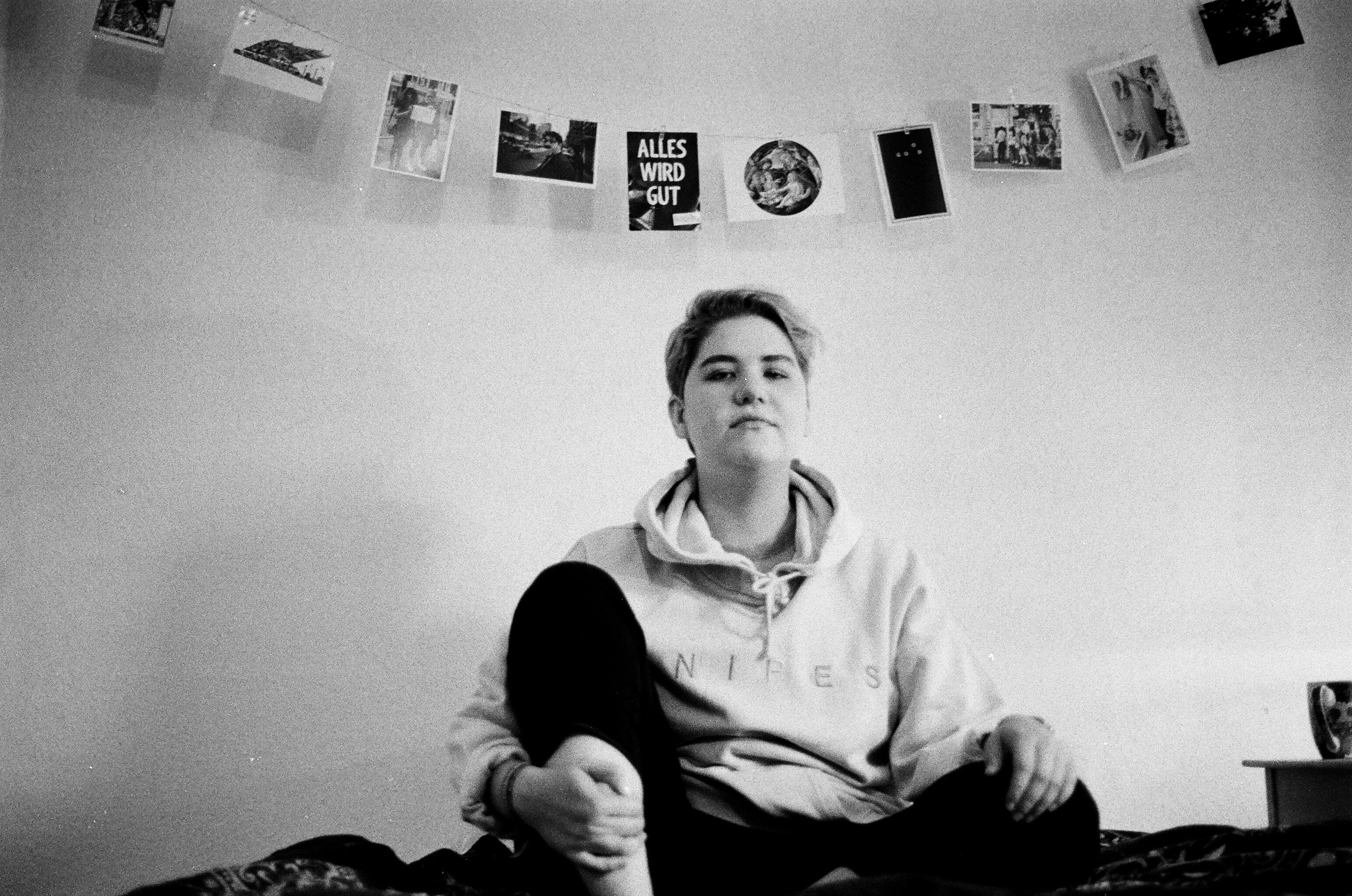
Featuring: Pelin Morgan, Anushka Chakravarti, Ellery Shentall, Olivia Boucher-Rowe, Owen Eddershaw, Zainab Majid, Kitty Low, Julia Brechtelsbauer, John Livesey, Hisham Pryce-Parchment, Vida Adamczewski, Sulamaan Rahim and Phoebe Bachsleitner.
Photography and Words by Laura Henderson Child; Produced by Antonio Perricone.


